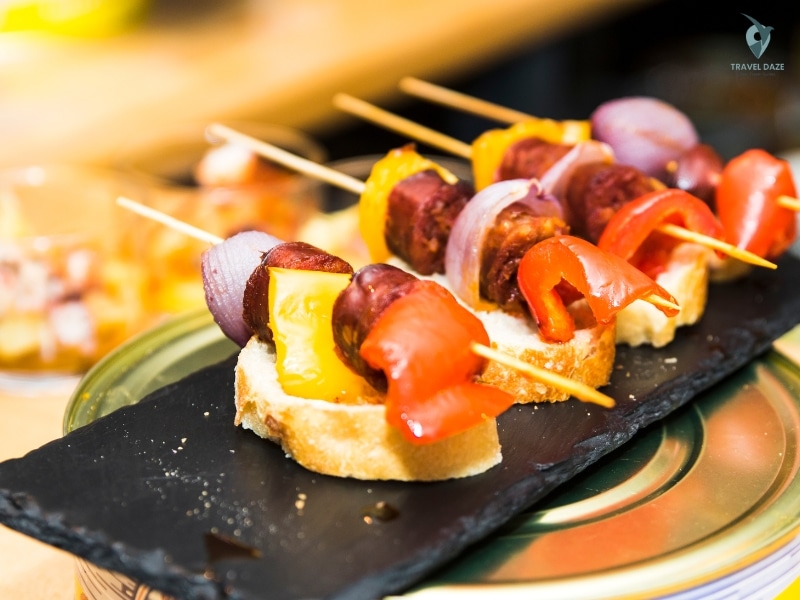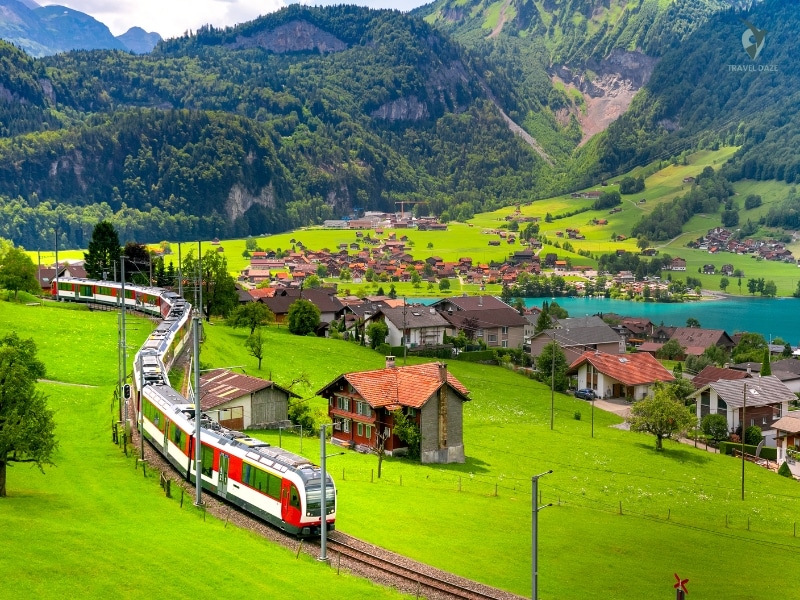I will always remember the first time I saw the northern lights. I was in Iceland when the sky brightened with dancing green ribbons, and I was left speechless. This amazing event occurs when solar particles hit Earth’s atmosphere, producing bright colours such as green, violet, and red. If you want to see this amazing natural wonder, you’ve come to the right spot.
Table of Contents
ToggleThe best places to see this amazing sight are in the “Aurora Belt”, which is located between 65 and 72° north latitude. I have travelled from Iceland to Norway, following these lights through three countries and gaining a lot of knowledge in the process. I found some helpful tips for planning the ideal trip to enjoy this amazing show.
Main Points
- The aurora borealis happens when solar particles meet Earth’s atmosphere.
- The most common colours are green, violet, and red.
- The best places to watch are in the area between 65 and 72 degrees Norway latitude.
- Iceland is a great place to see the lights.
- Good planning and timing are essential for a successful trip.
The Northern Lights are a natural light display in the sky, primarily seen in high-latitude regions around the Arctic and Antarctic. They are caused by the interaction of solar wind with the Earth’s magnetic field and atmosphere, creating beautiful colours that dance across the night sky.

When I saw the aurora borealis for the first time, it felt like the sky was putting on a special show just for me. This amazing event occurs when the sun releases charged particles during solar flares. These particles journey 150 million kilometres to reach Earth and hit atoms in our atmosphere, producing glowing emissions.
Picture the sun releasing energy while Earth’s magnetic field works like a cosmic bouncer, directing those particles towards the poles. When they collide with oxygen and nitrogen atoms, the sky shines in colours such as green, violet, and red. It’s like a beautiful dance in the sky, with shapes that look like shining curtains and bright arcs.
I will always remember the moment I confused a soft glow for light pollution, only to discover it was the aurora borealis putting on a gentle show. Near Tromsø, I saw rare red and purple colours, which felt like finding a hidden treasure in the night sky.
This phenomenon is not just a still rainbow; it is vibrant, moving, and always transforming. No matter if it’s your first time or your hundredth, the aurora borealis always amazes you.
The Ideal Time to View the Northern Lights
When it comes to seeing the aurora borealis, timing is crucial. The right time and conditions are important for the best experience, even though it happens all year round. Here’s what I’ve discovered about organising your trip to capture the perfect moments.
Best Months to Watch
The main season lasts from October to March, during which winter nights are the longest and darkest. Sightings can begin as early as late August. My first try in September in Iceland didn’t go well—there were cloudy skies and little activity. What about my trip in March? Absolutely enchanting.
Here’s a helpful tip: The months of September and March can often boost your chances. The Earth’s magnetic field lines up well with particles from the sun, increasing aurora activity. It’s nature’s way of giving you a better chance.
Best Times to Watch
Most activity takes place from 11 PM to 2 AM. One night near Tromsø, I was bundled up with a thermos of cocoa, waiting until 3 AM. Just when I was ready to quit, the sky burst into colours. Every cold moment was worth it.
Many resorts now provide aurora wake-up calls, so you can avoid staying up all night. Simply relax, and they will let you know when the show starts.
Be careful: don’t plan summer trips if you want to see the aurora. The midnight sun makes it very hard to see anything. I learnt this through experience.
- The best time is from October to March.
- Ideal hours: 11 PM to 2 AM
- The months of the equinox increase your opportunities.
- Resorts provide wake-up calls for your convenience.
- The midnight sun in summer makes it hard to see.
Best Places to See the Northern Lights
Following the northern lights has brought me to some of the most beautiful places on our planet. Every place provides a special setting for this natural marvel, ranging from frozen lagoons to wide tundras. These are my favourite places to see this amazing event.
Iceland
Iceland is a perfect place for those who want to see the northern lights. The Jökulsárlón lagoon, filled with floating icebergs, shows beautiful reflections of the shimmering lights. I stayed at the Ion Adventure Hotel, where the rooms are cosy and the views of the sky are amazing. Make sure to take the opportunity to visit the nearby glaciers and black sand beaches.
Norway
Alta in Norway is a great place, with over a 90% chance of seeing sights. The local microclimates frequently clear the skies, which increases your chances. I spent the night at the Sorrisniva Igloo Hotel, where I drifted off to sleep beneath a glass ceiling, gazing at the aurora. For something different, consider dog-sledding to the remote Abisko National Park.
Northern Canada
Churchill, Manitoba, is a unique town where you can see the northern lights and spot polar bears. The wide tundra provides clear views, and the frozen lakes of the Yukon create amazing chances for photos. I dressed warmly and spent hours outside, taking pictures of the lights against the frozen scenery.
- The Jökulsárlón lagoon in Iceland has beautiful reflections.
- In Alta, Norway, there is over a 90% chance of seeing it.
- Churchill, Canada, offers a chance to see the aurora and spot polar bears.
Ways to Improve Your Chances of Seeing the Lights
To see the aurora borealis, you need more than luck; you need to be prepared. Throughout the years, I have discovered that some planning can really change things for the better. Here’s how to increase your chances of seeing this amazing event.
Look at the Aurora Forecast.
Make sure to check the aurora forecast before you go out. I use apps such as Aurora Alerts to keep track of the KP index, which indicates geomagnetic activity. A KP index of 3 or more is best for visibility. Once, I drove for 45 minutes from Reykjavik to get away from the clouds, and it was worth it for the beautiful view I saw.
Leave the city lights behind.
Light pollution is a big problem for you. To see the northern lights well, move away from city lights. I suggest choosing rural B&Bs over hotels in the capital city. During one trip, I waited five hours in the cold, but the 20-minute light show made it all worthwhile.
Stay calm and ready.
Being patient is important. Try to plan for at least three days to boost your chances. Bring important items such as hand warmers and a red torch to keep your night vision intact. I’ve discovered that even when the weather looks great, the aurora can be hard to predict. Be adaptable and appreciate the experience.
- Track your activity with Aurora apps.
- Live in the countryside for clearer skies.
- Bring warm clothes and be prepared to wait.
What to Bring for a Northern Lights Trip
The right equipment can greatly enhance your experience of chasing the aurora. Temperatures can fall below -40°F/C, and you will spend long nights waiting for the right moment. Here’s what I’ve learnt from my travels to help you stay warm and take beautiful photos.

Cosy Clothes
Layering is very helpful in cold winter weather. I really trust my Smartwool base layer and Canada Goose parka. Thermal pants can also be used as pyjamas, which helps save space in your luggage. Remember to bring mittens—I tried using gloves once and immediately wished I hadn’t. Chemical foot warmers are very helpful, providing warmth for up to 8 hours.
- Smartwool base layers keep you warm.
- Canada Goose parka for warmth
- Chemical foot warmers for extended waits
Camera Gear
To capture the aurora, you need more than just a camera. You’ll need a DSLR and extra batteries to prevent the DSLR camera with extra batteries from fogging. I suggest using a Manfrotto Befree tripod for stable shots. Adjust your camera to take exposures of 15 to 30 seconds to capture the light just right. Here’s a helpful tip: Use a red torch to keep your night vision intact.
- DSLR with spare batteries
- Manfrotto Befree tripod provides stability.
- Red torch for seeing at night
With the right equipment, you’ll be prepared to face the cold and enjoy the experience. Set aside at least three days to boost your chances of witnessing the aurora. Believe me, every cold moment is worth it.
Enjoyable Things to Do Alongside Watching the Northern Lights
Combining your aurora adventure with special activities makes the trip memorable. The Arctic has exciting activities to enjoy during your days, in addition to the beautiful night sky. Here are my favourite choices for enjoying the outdoors while looking at the sky.
Dog sledding
I experienced dog sledding for the first time near Fairbanks. The fresh air, the noise of paws on snow, and the excitement of guiding my own team made it a memorable experience. It’s a great way to experience Arctic culture while you wait for the main event of the night.
Riding snowmobiles
Snowmobiling is a must for those who love excitement. I ran across frozen lakes in Norway, feeling the cold wind on my cheeks. It’s an exciting way to see the scenery and get ready for the evening’s aurora hunt. Make sure to dress warmly—it can get cold when you’re going fast!
Warm Springs and Cold Fishing
After a long night of watching the sky, relaxing in Iceland’s Secret Lagoon was truly wonderful. The difference between hot steam and icy eyelashes is amazing. For a more practical experience, give ice fishing in the Yukon a try. My first try was full of mistakes, but the laughter turned it into a memorable part of the trip.
- Dog sledding close to Fairbanks provides a chance to experience the culture.
- Riding snowmobiles over frozen lakes is an exciting experience.
- Hot springs and ice fishing offer a nice balance of relaxation.
How to Photograph the Northern Lights: Tips
Taking pictures of the aurora was more challenging than I thought, but the outcome was definitely worth it. My initial efforts were unclear and disappointing. I’ve discovered that to capture the lights, you need the correct settings, steady hands, and a little patience. I transformed my early mistakes into amazing photos.
Choosing the Correct Camera Settings
I began using my camera in auto mode, but the sky appeared dark and dull. I did some research and decided to switch to manual. I adjusted my ISO to a range of 800 to 1600 and set my aperture between f/2.8 and f/4. These settings allow enough light in without making the scene too bright. I used 15 to 30 seconds for exposure to capture the entire show.
Consistent shots are important.
My first shots were unsteady because I didn’t use a tripod. I found out that even a small movement can spoil the picture. A strong tripod is essential. I suggest using an intervalometer to prevent touching the camera while taking long exposure shots. These tools significantly improved my photos.
- Use a wide-angle lens to take in more of the sky.
- Bring extra batteries because cold nights can use them up quickly.
- Use apps such as PhotoPills to help you plan your composition.
Post-processing made a big difference. I made a Lightroom preset to improve the colours without going too far. Be cautious not to use too much green—it can make the natural beauty of the lights fade away.
Using the right equipment and settings, you will be prepared to capture the magic. It may take some attempts, but the outcomes are worth the work. Believe me, the time you spend in the cold will be worth it when you see your photos.
Your adventure to see the Northern Lights is ready for you.
Picture yourself enjoying your morning coffee while the aurora borealis slowly disappears with the sunrise. This special moment is just one of many you will remember on your trip. As the solar cycle reaches its peak from 2024 to 2026, it’s a great time to plan your getaway.
Enjoy your aurora chase alongside other Arctic adventures, such as dog sledding or relaxing in hot springs. These activities enhance your experience and make it memorable. Although there are no promises, the opportunity to witness the northern skies glow is absolutely worth it.
Begin planning your trip for autumn 2024 today. No matter if it’s your first visit or you’re coming back, this natural wonder will amaze you. This guide is here to encourage you to take the plunge and make memories that will last forever.
FAQ
The aurora borealis, also known as the northern lights, are natural light displays that occur in the sky, primarily in high-latitude regions around the Arctic. They are caused by the interaction of charged particles from the sun with the Earth’s atmosphere, creating beautiful, colourful lights that dance across the night sky.
The aurora borealis is a natural light show that happens when charged particles from the sun hit Earth’s atmosphere. It produces beautiful colours in the sky, often green, pink, or purple.
What is the best time to view the aurora borealis?
The busiest months are from late September to early March. To have the best experience, try to choose clear, dark nights from 10 PM to 2 AM.
What are the best places to see this phenomenon?
Iceland, Norway, and Northern Canada are among the top places to visit. Each place has its own beautiful scenery and a good chance of seeing the lights.
What can I do to increase my chances of seeing the aurora?
Look at the aurora forecast for solar activity, avoid city lights, and be patient. Clear skies and low light pollution are important.
What items should I bring for this type of trip?
Wear warm, layered clothes to keep comfortable in cold weather. Remember to bring a tripod and a camera that has manual settings to capture the lights.
Are there enjoyable activities to do alongside watching the aurora?
Definitely! Experience dog sledding, ride a snowmobile, or unwind in hot springs. These activities enhance the experience and make it more memorable.
Do you have any advice for taking pictures of the aurora borealis?
Use a wide-angle lens, switch your camera to manual mode, and stabilise your shots with a tripod. Try using long exposures to achieve great results.





